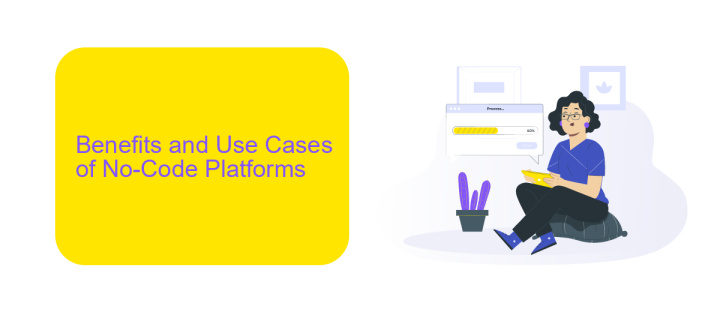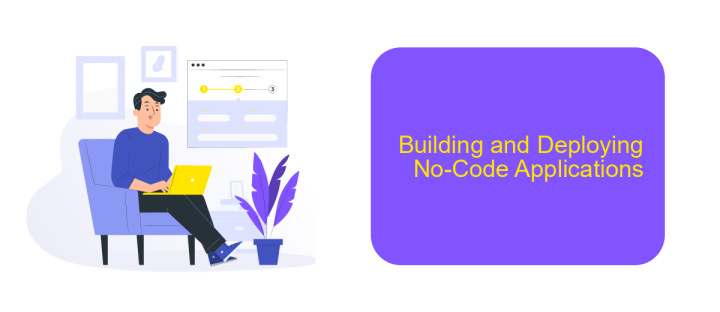No-Code Guide
In today's fast-paced digital world, the ability to create applications and automate tasks without writing a single line of code has become a game-changer. No-code platforms empower individuals and businesses to innovate and streamline processes quickly and efficiently. This guide will introduce you to the essentials of no-code development, helping you unlock your creative potential and transform your ideas into reality.
Introduction to No-Code Development
No-code development is revolutionizing the way individuals and businesses create software applications. By eliminating the need for traditional coding skills, no-code platforms empower users to build functional and dynamic applications through visual interfaces and pre-built templates.
- Rapid Prototyping: Quickly transform ideas into working prototypes without writing a single line of code.
- Cost-Effective: Save on development costs by reducing the need for specialized coding expertise.
- Accessibility: Democratize software development, making it accessible to non-technical users.
- Integration: Easily connect with other tools and services, such as ApiX-Drive, to automate workflows and enhance functionality.
No-code platforms are transforming industries by enabling faster development cycles and reducing barriers to entry. Whether you're a small business owner or a large enterprise, no-code solutions offer a flexible and scalable approach to application development. Embrace the future of software creation with no-code tools and unlock new possibilities for innovation and efficiency.
Benefits and Use Cases of No-Code Platforms

No-code platforms offer numerous benefits, making them a popular choice for businesses and individuals alike. One of the primary advantages is the significant reduction in development time and costs. By enabling users to create applications without writing code, these platforms democratize software development, allowing non-technical users to bring their ideas to life. This leads to faster prototyping, quicker iterations, and a more agile development process. Additionally, no-code platforms often come with pre-built templates and drag-and-drop interfaces, which further streamline the creation process and reduce the learning curve.
The use cases for no-code platforms are vast and varied. They are ideal for building everything from simple websites and blogs to complex business applications. For instance, small businesses can use no-code tools to develop customer relationship management (CRM) systems, automate workflows, and create custom dashboards. Integration services like ApiX-Drive can be seamlessly incorporated into these platforms, enabling users to connect different applications and automate data transfers without any coding knowledge. This makes it easier to manage and synchronize data across various tools, enhancing overall efficiency and productivity.
Choosing the Right No-Code Platform

Choosing the right no-code platform can be a daunting task, but understanding your specific needs can simplify the process. Start by identifying the primary purpose of your project, whether it’s building a website, automating workflows, or creating an app.
- Analyze the platform’s ease of use and learning curve.
- Check the available integrations and compatibility with other tools.
- Evaluate the customization options and flexibility.
- Consider the pricing model and scalability.
- Look for community support and available resources.
For instance, if your project requires extensive integrations, platforms like ApiX-Drive can be extremely beneficial. They offer seamless connectivity with numerous services, simplifying the process of automating tasks and data flow. Ultimately, the right no-code platform should align with your project goals, technical skills, and budget constraints.
Building and Deploying No-Code Applications

Building and deploying no-code applications has revolutionized how businesses approach software development. With no-code platforms, users can create fully functional applications without writing a single line of code. This democratizes app development, allowing non-technical users to bring their ideas to life.
The process of building a no-code application typically involves selecting a platform, designing the user interface, and configuring the app's logic through visual workflows. These platforms offer drag-and-drop components and pre-built templates, making it easier to get started quickly. Once the application is built, deploying it is often as simple as clicking a button.
- Select a no-code platform that suits your needs.
- Design the user interface with drag-and-drop tools.
- Configure the app's logic using visual workflows.
- Test the application to ensure it meets your requirements.
- Deploy the application with a single click.
For those needing to integrate their no-code applications with other services, platforms like ApiX-Drive can be invaluable. ApiX-Drive simplifies the integration process, allowing users to connect various applications and automate workflows without technical expertise. This ensures that your no-code application can seamlessly interact with other tools and services, enhancing its functionality and utility.
- Automate the work of an online store or landing
- Empower through integration
- Don't spend money on programmers and integrators
- Save time by automating routine tasks
Future Trends and Advancements in No-Code Development
The future of no-code development is poised for significant advancements, driven by the increasing demand for rapid application deployment and the democratization of software creation. As artificial intelligence and machine learning become more integrated into no-code platforms, users will be able to build more complex and intelligent applications with minimal effort. These technologies will enable predictive analytics, automated workflows, and personalized user experiences, making no-code solutions even more powerful and accessible.
Integration capabilities will also see substantial improvements, allowing for seamless connectivity between various applications and services. Tools like ApiX-Drive are at the forefront of this trend, offering robust solutions for automating data transfer and synchronization between different platforms. This will empower users to create comprehensive, interconnected systems without writing a single line of code. Additionally, the rise of community-driven innovation and open-source no-code tools will further enhance the ecosystem, providing users with a plethora of resources and templates to accelerate their development processes.
FAQ
What is No-Code development?
Who can benefit from No-Code tools?
What types of applications can be built using No-Code platforms?
How secure are No-Code applications?
How can I integrate different tools and services using No-Code platforms?
Time is the most valuable resource in today's business realities. By eliminating the routine from work processes, you will get more opportunities to implement the most daring plans and ideas. Choose – you can continue to waste time, money and nerves on inefficient solutions, or you can use ApiX-Drive, automating work processes and achieving results with minimal investment of money, effort and human resources.


